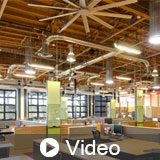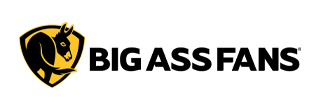
Aggressively Passive: Confronting the Comfort Status Quo
Starting in 1999, Big Ass Fans pioneered the high-volume, low-speed (HVLS) fan industry by introducing large industrial fans to agricultural spaces. Recognizing the fans’ versatility, our customers began to install them in warehouses, factories, commercial spaces, and homes. With each new application, our engineers set out to design the perfect solution to meet our customers’ needs. Our dedication to innovation has led us to develop the industry’s first silent motor technology, smart fan controls and automation, and air disinfection technologies. For more information about Big Ass Fans, visit bigassfans.com, cleanairsystem.com, or call 1-877-BIG-FANS.
Following a case study format, selected project team members from the DPR Phoenix Regional Headquarters tell their stories through a series of interviews, info-graphics, and building video tours. The DPR Phoenix Regional Headquarters achieved LEED Platinum certification under the LEED NC 2009 rating system, and received one of the first Net-Zero Energy certifications from the International Living Future Institute. The course demonstrates the innovative strategies the team used to optimize the building’s energy performance in a hot arid climate, such as a 4-part integrated passive cooling. Experts show how using high volume, low capacity fans throughout the project help with the achievement of IEQ c2 (Increased ventilation) and with achieving thermal comfort for the occupants.
- Identify the integrated strategies the DPR project team used to reduce the building’s electrical loads, such as elevated air speed, convective cooling principles, and evaporative cooling. (EAp2 and EAc1)
- Explain “adaptive thermal approach” and the impact of thermal comfort through increased air movement (IEQ 7.1)
- Describe how improved distribution of air increases the effectiveness of ventilation and comfort systems (IEQc2)
- Discuss how occupant engagement and real-time feedback is a crucial component of achieving net-zero energy (EAc2)
- List challenges and lessons learned, such as energy modeling for unconventional cooling systems (EAc1)





